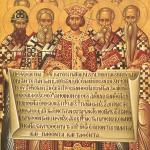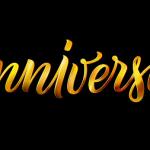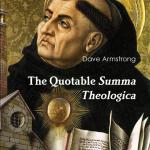Neo-pagan blogger Jason Pitzl-Waters is mad at me for this.
He writes:
Hilarious that I’m “shouting down” the argument of demonic possession, but you see no problem with literally demonizing Pagan religions. Mark is arguing against a straw-man version of my piece, boiling it down to me “constantly claim[ing] credit for everything in Christianity,” or that I’m “shrieking” while the poor Catholics are simply trying to help people understand the dangers of demons.
That you engage with my article by proxy is telling.
Could you document where I said all pagans or pagan religion is demonic? Thank you.
My view of paganism (real paganism, I mean, not the synthetic variety called neo-paganism) is actually quite high and much more nuanced. Yes, there are some pagans who are willingly cooperating with devils. But then again, there are Christians who are willingly cooperating with devils. All have sinned and fallen short of the glory of God, including–especially–me. That said, a more complete view of my thoughts on paganism is found here, here, and here.
My actual view of paganism is much closer to Chesterton’s than to Jack Chick: “Paganism was the biggest thing in the world. Christianity was bigger. Everything since then has been comparatively small.”
I’m not sure what engaging your article by proxy means. I was not super interested in your article. I was just interested in the (sadly brief and desultory) conversation I had with somebody on FB, because it occasioned a couple of thoughts and my blog is about, among other things, stuff that occurs to me (recall the blog motto). As I say, I don’t spend much time fighting with neo-pagans. The movement seems to me to be what the Irenist describes: a boutique sect. It seems to me to be a particularly unrealistic species of Protestantism based on an even more fictional history than the fictional Baptist history of the Trail of Blood. It’s massively anachronistic. It is driven (like all revolts) by a perception of some real evils that need righting. In particular, it wants to restore a kind of sacramentality to the world that has been ruthlessly crushed by the materialism and scientism of the 20th century. It protests the violence in Christian history while overlooking the violence of human history. And it makes the fundamental mistake of worshipping the creature instead of the Creator (which truly *is* pagan). It has much that I empathize with. But it is hopelessly confused.
What puzzles me about neo-paganism is why it wastes all this time inventing a fake synthetic paganism based on some suburbanites’ supposings about what esoteric sects did centuries ago, when there are lots of real pagans running around in Asia and the global south they could just go join without all this laborious re-inventing of an almost entirely fictional wheel. The focus of the neo-pagans is on pretend recreations of ancient euro-paganism, based on fictionalized history , coupled with modern notions of relativism and libertinism that would have often baffled and horrifed many ancient pagans (who were by no means a monolith). So when you consult an actual pagan rooted in an actual historic pagan tradition like, say, the Dalai Lama on things like sexual mores, he sounds disappointingly more like Pope Benedict than like some sexually liberated votress of a goddess from a Joss Whedon fantasy universe dressed like a Frank Frazetta heroine.
Neo-pagans also carefully ignore the fact that the last thing *those* pagans did was ask for baptism. That’s because, of course, the *real* motivation of neo-pagans is not to return to past religious traditions but to react against present ones and invent new ones. It is remarkably kindred in spirit to the evangelical Church I joined as a new Christian: a storefront church of college students with Bibles who knew a thing or two and were going to set Western civilization right. Neo-paganism aims to articulate a particularly strong form of Protestantism that rejects not just the Church, not just Jesus, not just monotheism and not just the hardboiled atheism that is a reaction to monotheism, but both the faith and the materialist reaction to it and the civilization that result from it. It wants theism and sacramentalism and a certain Middle Earth/world music/koyaanasqatsi multicultural fantasy aesthetic, as well as some of the trendier aspects of postmodern feminism dressed up in cool robes, all while ignoring the actual lot of women in the overwhelming majority of pre-Christian antiquity and the fact that it was the Christian tradition that, due to the influence of the Blessed Virgin, essentially invented the idea that the love of woman could be ennobling (a concept foreign to, for instance, the pagan Greeks, who saw women as breeder units for male citizens).
And all this anachronism is indulged in by neo-pagans while ignoring the real flesh and blood pagans who happen to not be ethnically related to dilletante suburban Americans and Europeans (except for a dash of cool Native American spirituality–also ignoring the fact that vast numbers of Native Americans asked for baptism too). I suspect this may be due to the fact that dilletante suburban Europeans and Americans don’t *really* want to adopt the lifestyle of a 15th century Maori cannibal, or eschew western science (a fruit of Christianity) in favor of shaking mistel branches at statues when they have a toothache, or live the hardscrabble hand to mouth existence of a hunter/gatherer on the Veldt. That’s getting in touch with a lot more Nature than dilettante suburbanites want. So while I have a very high regard for real paganism, it’s hard to take neo-paganism seriously. It is, painfully obviously, the product not of ancients, but of suburban moderns, playing at fantasy.
The real heirs to all that was best in paganism are, in fact, Catholics. If you want actual contact with cultural currents and thoughtforms that take you back to remote antiquity and connect you, not only with pre-Christian pagans, but with ancient Jews as well, then look there. As the Victorian (Protestant) historian Thomas Macauley said:
There is not, and there never was on this earth, a work of human policy so well deserving of examination as the Roman Catholic Church. The history of that Church joins together the two great ages of human civilisation. No other institution is left standing which carries the mind back to the times when the smoke of sacrifice rose from the Pantheon, and when camelopards and tigers bounded in the Flavian amphitheatre. The proudest royal houses are but of yesterday, when compared with the line of the Supreme Pontiffs. That line we trace back in an unbroken series, from the Pope who crowned Napoleon in the nineteenth century to the Pope who crowned Pepin in the eighth; and far beyond the time of Pepin the august dynasty extends, till it is lost in the twilight of fable. The republic of Venice came next in antiquity. But the republic of Venice was modern when compared with the Papacy; and the republic of Venice is gone, and the Papacy remains. The Papacy remains, not in decay, not a mere antique, but full of life and youthful vigour. The Catholic Church is still sending forth to the farthest ends of the world missionaries as zealous as those who landed in Kent with Augustin, and still confronting hostile kings with the same spirit with which she confronted Attila. The number of her children is greater than in any former age. Her acquisitions in the New World have more than compensated for what she has lost in the Old. Her spiritual ascendency extends over the vast countries which lie between the plains of the Missouri and Cape Horn, countries which a century hence, may not improbably contain a population as large as that which now inhabits Europe. The members of her communion are certainly not fewer than a hundred and fifty millions; and it will be difficult to show that all other Christian sects united amount to a hundred and twenty millions. Nor do we see any sign which indicates that the term of her long dominion is approaching. She saw the commencement of all the governments and of all the ecclesiastical establishments that now exist in the world; and we feel no assurance that she is not destined to see the end of them all. She was great and respected before the Saxon had set foot on Britain, before the Frank had passed the Rhine, when Grecian eloquence still flourished at Antioch, when idols were still worshipped in the temple of Mecca. And she may still exist in undiminished vigour when some traveller from New Zealand shall, in the midst of a vast solitude, take his stand on a broken arch of London Bridge to sketch the ruins of St. Paul’s.
Since Macauley wrote this, the Catholic Church has–largely in lands that were pagan a century ago, experienced a 7000% percent growth. Pagans (real ones, not synthetic post-Christian suburban Protestant ones) are still searching for and finding Jesus Christ. Thanks be to God.















